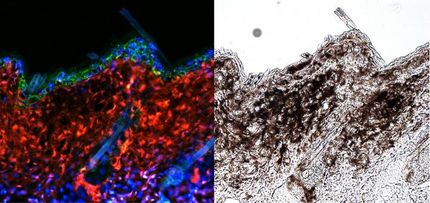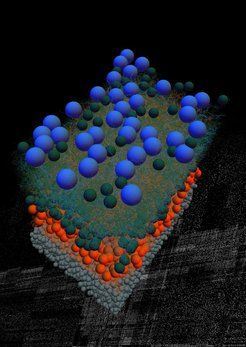BUSM study reveals novel mechanism by which UVA contributes to photoaging of skin
A study conducted by researchers at Boston University School of Medicine (BUSM) provides new evidence that longwave ultraviolet light (UVA) induces a protein that could result in premature skin aging. The findings demonstrate that aspects of photoaging, the process of skin aging by chronic exposure to ultraviolet radiation, could be linked to genetic factors that accelerate the aging process when induced by the environment.
The study, published in the Journal of Investigative Dermatology, was led by BUSM co-authors Thomas M. Ruenger MD, PhD, professor and vice chair of the department of dermatology, and Hirotaka Takeuchi, MS.
Photoaging is attributed to continuous exposure to UVA and shortwave ultraviolet light (UVB) rays over a long period of time and affects skin surfaces most often exposed to sunlight, including the face, ears, hands and neck. The UVA or UVB rays can be from the sun or from synthetic sources, such as tanning beds. Progerin is a protein that has been associated with both normal and abnormal aging. In Hutchinson Gilford Progeria syndrome, a genetic disorder characterized by a vast acceleration of aging of most organs, expression and accumulation of progerin is caused by a mutation in the Lamin A gene.
In this study, skin cells were cultured and exposed to UVB or UVA rays and then examined for expression and accumulation of progerin. The results showed that progerin is induced by ultraviolet light, specifically UVA rays, and that this induction is mediated by reactive oxygen species causing alternative splicing of the LaminA gene pre-mRNA.
"This, to our knowledge, is the first time that induction of progerin is described in response to an external agent," said Ruenger, who also is professor of pathology and laboratory medicine at BUSM and a dermatologist at Boston Medical Center. "Our results reveal a novel mechanism by which UVA rays, which are often emitted from tanning beds, may play a role in the acceleration of photoaging of the skin."
The researchers also note that some aspects of photoaging should be regarded as a process of damage-accelerated intrinsic aging and that intrinsic and extrinsic aging are interdependent.
Most read news
Organizations
Other news from the department science

Get the life science industry in your inbox
By submitting this form you agree that LUMITOS AG will send you the newsletter(s) selected above by email. Your data will not be passed on to third parties. Your data will be stored and processed in accordance with our data protection regulations. LUMITOS may contact you by email for the purpose of advertising or market and opinion surveys. You can revoke your consent at any time without giving reasons to LUMITOS AG, Ernst-Augustin-Str. 2, 12489 Berlin, Germany or by e-mail at revoke@lumitos.com with effect for the future. In addition, each email contains a link to unsubscribe from the corresponding newsletter.




















































